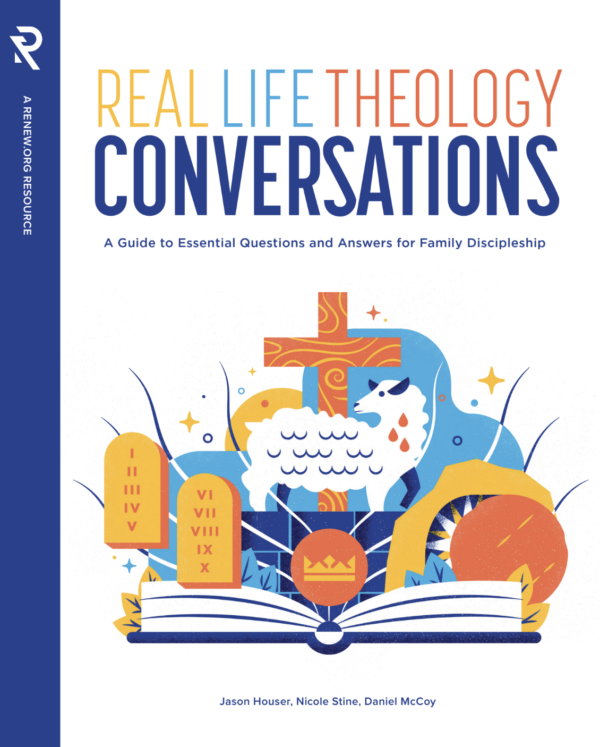
Meals of Jesus
Human beings are the only animals that eat communally. We decorate our tables, call our families, present the meal with ornamental color, and use specific utensils for various elements of the meal. It looks more like a ceremony than a biological necessity and, in fact, it is. Meals are complex social events that function as tools for building community rather than simple nourishment for the individual.
Put simply, meals accomplish specific things in the context of a community.
In the social world of Jesus’ day, they had four basic functions:
To support kinship – to create solidarity. One ate with the clan and by doing so established the boundaries of who was “in” and who was “out.” Meals reminded the household where their loyalties lay. The concentric rings of table fellowship were: extended family, household servants or hired workers, and members of your social class (those who could reciprocate), who were invited to special banquets.
To enforce boundaries – hierarchy, status, and gender – especially through seating arrangements. During these meals the social group was reminded who sat at the head of the table and who was at the foot (or in their case who washed the feet). Women’s roles and paternal hegemony were reinforced.
To perpetuate social values. During meals certain rituals were maintained such as washings, prayers, and symbols. In addition special feasts, fasts, and Sabbath observances were celebrated. In some ways meals were quite liturgical, sometimes even mirroring the events of the temple (cf. Neufeld 16; Lev 23:2-44).
To gain honor – through hosting banquets or through clever discourse as a guest. The wealthy were able to show off as well as demonstrate benevolence to guests. The guests were able to show deference as well as entertain their host and other guests with wit or wisdom. In fact Luke, who describes Jesus’ table fellowship in more detail than the other gospel writers, portrays them somewhat like the Greek “symposia” where wit and conversation are central.
This is the world in which Jesus lived. Yet he didn’t abide by its rules. In fact, he used meals as a means of disrupting social values and overturning normal standards of behavior and honor. First, Jesus used meals to reconfigure who he considered his true kin. Rather than capitulating to his family’s request to see him, he created a fictive family around the table based on one’s devotion to hearing and obeying God’s word. This was never clearer than at the Last Supper. Second, “Jesus’ open table fellowship was a strategy used to challenge social and religious exclusivism wherever it was accepted as normal or officially sanctioned” (Koenig, 20). Because he ate with all class of “sinners” he offended the sensibilities of the religious elite. Third, he refused to perpetuate religious traditions about washing, fasting, and Sabbath regulations. This was more than a faux pas. This was an assault on a religious system that prioritized rules above people. Finally, when invited by prominent teachers, Jesus often offended both the host and the guests by pointing out their misguided priorities. Moreover, he often honored some sinner who happened on the scene. He turned the tables of social rank upside down at these banquets. See the chart below for Jesus’ subversive use of meals as a tool for social reconstruction.
A Chronological List of Table-Fellowship Incidents in Jesus’ Ministry
Category A – Jesus uses meals to reconfigure kinship relations
Category B – Jesus disregards a person’s status during a meal
Category C – Jesus disregards purity rituals involved in meals
Category D – Jesus himself is reinterpreted eschatologically

In addition, meals are often used as sermon illustrations especially in Matthew and Luke (e.g. Matt 11:18–19; 15:20; 22:2–14 [/ Luke 7:33–34]; 24:38 [/ Luke 17:27–28]; 25:1–13; Luke 10:7; 11:5-12; 12:36; 13:26; 14:16–24; 17:8; John 4:31–34; 6:25–59).
Conclusion: In a sense, Jesus’ subversive message was embodied in his table fellowship. He used meals as a fulcrum for social reconstruction. Truly, Jesus turned these tables into pulpits and used them to reconfigure his world.
Further Reading:
Bartchy, S. S. “Table Fellowship,” in Dictionary of Jesus and the Gospels, ed. J. B. Green; S. McKnight; & I. H. Marshall (Downer’s Grove, IL: IVP, 1992) 796-800.
Douglas, Mary. “Deciphering a Meal,” Daedalus 101 (1972): 61–81.









